COVID-19
Court Ruling on Murthy Misses Point Entirely
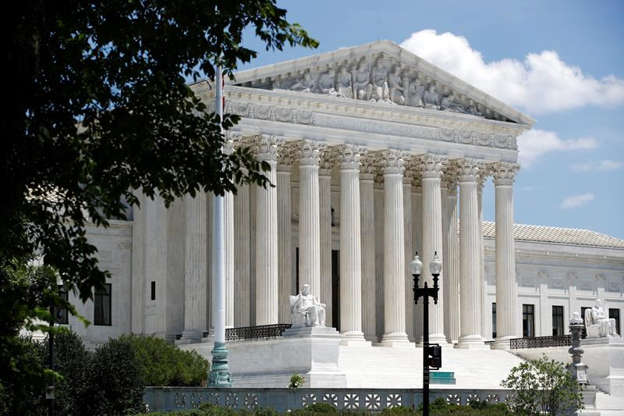
From the Brownstone Institute
The United States Supreme Court ruled, in a 6 to 3 decision, that the plaintiffs in the most important free speech case in decades did not have standing to ask for preliminary injunctive relief.
That is wrong.
In her majority opinion, Justice Amy Coney Barrett bent over sideways to avoid judging the case on its merits – the allegation is that various and sundry government agencies coerced private social media companies to remove posts and tweets and such they did not like – and focused instead on whether or not the plaintiffs had the right, or standing, to ask for and be granted such relief.
The plaintiffs, essentially, had their content throttled or removed from social media platforms at the behest of the government because they did not follow the government line on the pandemic response and election security, daring to question things like social distancing – even Dr. Anthony Fauci has admitted they just made that up – and how secure – or unsecure – a “vote-by-mail” election could possibly be.
The request before the court was to allow an injunction against a number of government agencies that barred improper communication with the social media platforms. The question of whether those agencies did in fact do that – essentially violating the First Amendment rights of the plaintiffs – does not appear at issue. As Justice Samuel Alito (joined in opposition to the ruling by Justices Clarence Thomas and Neil Gorsuch) said in his blistering dissent, that unquestionably happened.
The case, known as Murthy V. Missouri, involves two states and a number of private plaintiffs, all claiming that they were improperly censored – and thus damaged – by federal agencies and/or the dubious “cut out” front groups they created. Alito focused on one plaintiff – Jill Hines, who ran a Louisiana health-related (read pandemic response criticism) that was consistently degraded by Facebook after calls and pronouncements from the White House – in his dissent, noting that she unquestionably had standing (even Barrett admitted that plaintiff was closest, as it were), especially in light of the fact the government itself admitted the plaintiff had been damaged.
In today’s ruling, “The Court, however, shirks that duty and thus permits the successful campaign of coercion in this case to stand as an attractive model for future officials who want to control what the people say, hear, and think,” wrote Alito. “That is regrettable. What the officials did in this case was more subtle than the ham-handed censorship found to be unconstitutional (in a separate case), but it was no less coercive. And because of the perpetrators’ high positions, it was even more dangerous. It was blatantly unconstitutional, and the country may come to regret the Court’s failure to say so. Officials who read today’s decision…will get the message. If a coercive campaign is carried out with enough sophistication, it may get by. That is not a message this Court should send.”
Barrett wrote that, while she was not opining on the merits of the case, the plaintiffs could not show standing to receive a preliminary injunction. Such an injunction would have immediately barred government abuse going forward, but Barrett held, basically, that just because it did happen doesn’t mean it will happen again and therefore the plaintiffs are not entitled to preliminary (or prospective) relief.
As part of her reasoning, Barrett said that social media platforms did act on their own, at least on occasion, as part of their standard “content moderation” efforts and there was little or no “traceability” back to specific government individuals showing an immediate and direct correlation between a government compliant and a private company action.
Wrong.
First, in the Hines matter, even Barrett noted there was an element of traceability (that was enough for Alito to say she unquestionably had standing to seek relief and, therefore, the case should have been decided on its merits).
Second, companies like Facebook, which in the past have paid huge fines to the government, are in a very precarious position vis-a-vis federal regulation. From “Section 230” protections – a government code that limits their exposure to civil liability when deciding to drop content – to ever-growing threats of further government intervention and potential anti-trust actions, social media companies are internally incentivized to comply with government requests.
In other words, it is not at all a coincidence that a very large percentage of social media execs are “former” government employees and elected officials.
“In sum, the officials wielded potent authority. Their communications with Facebook were virtual demands,” Alito wrote. “And Facebook’s quavering responses to those demands show that it felt a strong need to yield. For these reasons, I would hold that Hines is likely to prevail on her claim that the White House coerced Facebook into censoring her speech.”
In her ruling, Barrett made other significant errors. First, she referred to the “Election Integrity Partnership” (EIP) as a “private entity,” and therefore able to make requests of social media companies.
In fact, the EIP (a group of academic “misinformation specialists”) was morphed into existence by the Department of Homeland Security, specifically its Cybersecurity and Infrastructure Security Agency, typically known as CISA. The EIP was funded by the government, many of its workers were former (though for many, ‘former’ may be a stretch) federal security agency employees, and the EIP specifically and consistently did the bidding of CISA when asked.
For Barrett to call the EIP a “private entity” shows a complete (intentional?) misunderstanding of the legal landscape and the reality of censorship-industrial complex.
The EIP and other government-sponsored cutout groups that make up the censorship-industrial complex are as independent from the government and the deep state as a foot is independent from a leg.
Barrett also claimed that similar government activities seemed to have lessened in the recent past, making the need for the going-forward injunction unnecessary.
Such a statement is impossible to prove as being true or false – especially after today – but making the assumption that it is even vaguely true, Barrett again misses the mark. If the government is censoring less now than it did two years ago it is because of the massive amount of public attention that has been drawn to the despicable practice by the press and, to be blunt, this very lawsuit.
CISA, etc. did not wake up one morning 18 months ago and say ‘Hey, we better cool it on this” because they suddenly realized they were most likely violating the Constitution; they did so because of the public – and Congressional – pressure.
And now with at least the legal pressure lessened (and an election coming up), to believe that the activities will not increase is naïve to the point of childish – that’s why this future, going forward, prospective injunction was so important.
That didn’t stop the Biden administration from crowing and, presumably, figuring out to ramp up the program for November.
Critics of the decision were loud and voluminous. Appearing on Fox News, legal commentator Jonathan Turley said that “standing issues” are often “used to block meritorious claims” and that the government’s “censorship by surrogate makes a mockery of the First Amendment.”
“The Supreme Court’s decision,” said White House press secretary Karine Jean-Pierre, “helps ensure the Biden administration can continue our important work with technology companies to protect the safety and security of the American people.”
Matt Taibbi, one of the reporters behind the outing of the “Twitter files,” noted that KJP’s statement is astonishingly egregious, but also very telling. She essentially admits government censorship is occurring and claims it is good:
That “important work,” of course, includes White House officials sending emails to companies like Facebook, with notes saying things like ‘Wanted to flag the below tweet and am wondering if we can get moving on having it removed ASAP.’ The Supreme Court sidestepped ruling on the constitutionality of this kind of behavior in the Murthy v. Missouri case with one blunt sentence: “Neither the individual nor the state plaintiffs have established Article III standing to seek an injunction against any defendant.”
“The great War on Terror cop-out, standing — which killed cases like Clapper v. Amnesty International and ACLU v. NSA — reared its head again. In the last two decades, we’ve gotten used to the problem of legal challenges to new government programs being shot down precisely because their secret nature makes collecting evidence or showing standing or injury difficult, and Murthy proved no different.”
Dr. Jay Bhattacharya, an internationally recognized Stanford medical professor, is one of the private plaintiffs in the suit. Bhattacharya is one of the co-authors of the Great Barrington Declaration, which called for a more targeted and rational response to the pandemic response. When it comes to standing, he points directly to an email from then-National Institutes of Health Chief (Tony Fauci’s sort-of boss) Francis Collins, calling on his fellow government employees to engage in a “devastating takedown” of Bhattacharya and the Declaration itself.
Barrett wrote that “Enjoining the Government defendants, therefore, is unlikely to affect the platforms’ content-moderation decisions,” an opinion Bhattacharya was having none of.
“Unlikely to continue to be damaged?” asked Bhattacharya. “How do we know that? And now because of this ruling we have no legal protection from it happening. The court ruled that you can censor until you get caught and even then there will be no penalty.”
Because of the focus on standing, Bhattacharya likened today’s ruling to giving the go-ahead to “broadly censor ideas” as long as you make sure not to traceably censor a specific individual.
A disappointed Bhattacharya has hopes for the future – the case was, again, not decided on its merits and is simply remanded without the injunction back to federal district court in Louisiana – but thinks electeds need to pass laws to stop the censorship.
“At this point, Congress has to act and this needs to be an election issue,” Bhattacharya said.
John Vecchione, New Civil Liberties Alliance Senior Litigation Counsel and the lawyer for four of the five private individuals (including Hines and Bhattacharya) said today’s ruling was “not in accordance with the facts” of the situation.
“There is a level of unreality about this opinion,” Said Vecchione, adding that it reads like a “roadmap for government censors.”
While some in the media have tried to identify this case as having “right-wing” support, Vecchione noted it was originally filed while Donald Trump was president and therefore goes far beyond partisan politics to the heart of the rights of American citizens.
The suit, as noted, goes back to district court and Vecchione says they will continue to gather facts and depositions and even more specific instances of “traceability” – he says they already have enough, but Barrett did not agree – and keep working it through the courts. He said he expects to be back at the Supreme Court sometime in – hopefully – the near future.
“Meanwhile, any government agency, any administration can censor any message they don’t like,” Vecchione said.
And no matter a person’s politics, that is just plain wrong.
Or as Justice Alito wrote:
“For months, high-ranking Government officials placed unrelenting pressure on Facebook to suppress Americans’ free speech. Because the Court unjustifiably refuses to address this serious threat to the First Amendment, I respectfully dissent.”
Republished from the author’s Substack
COVID-19
17-year-old died after taking COVID shot, but Ontario judge denies his family’s liability claim

From LifeSiteNews
Ontario Superior Court Justice Sandra Antoniani ruled that the Department of Health had no ‘duty of care’ to individual members of the public in its pandemic response.
An Ontario judge dismissed a liability claim from a family of a high schooler who died weeks after taking the COVID shot.
According to a published report on March 26 by Blacklock’s Reporter, Ontario Superior Court Justice Sandra Antoniani ruled that the Department of Health had no “duty of care” to a Canadian teenager who died after receiving a COVID vaccine.
“The plaintiff’s tragedy is real, but there is no private law duty of care made out,” Antoniani said.
“There is no private law duty of care to individual members of the public injured by government core policy decisions in the handling of health emergencies which impact the general population,” she continued.
In September 2021, 17-year-old Sean Hartman of Beeton, Ontario, passed away just three weeks after receiving a Pfizer-BioNtech COVID shot.
After his death, his family questioned if health officials had warned Canadians “that a possible side effect of receiving a Covid-19 vaccine was death.” The family took this petition to court but has been denied a hearing.
Antoniani alleged that “the defendants’ actions were aimed at mitigating the health impact of a global pandemic on the Canadian public. The defendants deemed that urgent action was necessary.”
“Imposition of a private duty of care would have a negative impact on the ability of the defendants to prioritize the interests of the entire public, with the distraction of fear over the possibility of harm to individual members of the public, and the risk of litigation and unlimited liability,” she ruled.
As LifeSiteNews previously reported, Dan Hartman, Sean’s father, filed a $35.6 million lawsuit against Pfizer after his son’s death.
Hartman’s family is not alone in their pursuit of justice after being injured by the COVID shot. Canada’s Vaccine Injury Support Program (VISP) was launched in December 2020 after the Canadian government gave vaccine makers a shield from liability regarding COVID-19 jab-related injuries.
However, only 103 claims of 1,859 have been approved to date, “where it has been determined by the Medical Review Board that there is a probable link between the injury and the vaccine, and that the injury is serious and permanent.”
Thus far, VISP has paid over $6 million to those injured by COVID injections, with some 2,000 claims remaining to be settled.
According to studies, post-vaccination heart conditions such as myocarditis are well documented in those, especially young males who have received the Pfizer jab.
Additionally, a recent study done by researchers with Canada-based Correlation Research in the Public Interest showed that 17 countries have found a “definite causal link” between peaks in all-cause mortality and the fast rollouts of the COVID shots as well as boosters.
COVID-19
10 Shocking Stories the Media Buried This Week

Measles, Fauci, Politics and Public Education. This is a fascinating read
#10 – ‘Measles Death’ of 6-Year-Old Girl Exposed as a Media HOAX
The media claimed a 6-year-old girl died of measles, but “she did not die of measles by any stretch of the imagination,” Dr. Pierre Kory says.
“In fact, she died of pneumonia. But it gets worse than that because she didn’t really die of pneumonia. She died of a MEDICAL ERROR.”
Let that sink in.
What happened was a complete breakdown in basic medical care. The hospital failed to give her the appropriate antibiotic regimen to treat her pneumonia. By the time they corrected their mistake, it was too late, and the girl died “catastrophically.”
“I mean, this is like medicine 101. You put them on two antibiotics to cover all the possibilities. It’s a grievous error, and it’s an error which led to her death,” Dr. Kory attested.
Not only did Covenant Children’s Hospital fail to provide the appropriate antibiotic, but when they noticed their error, they dragged their feet and took another 10 hours to administer it.
“By that time, she was already on a ventilator. And approximately 24 hours later—actually, less than 24 hours later—she died,” Dr. Kory explained.
And she did not pass away peacefully. According to Dr. Kory, “She died rather catastrophically.”
And while her family grieved, the media hijacked her death to stir fear and push the vaccine narrative. Just another “measles death” used as a political weapon.
This is a case Dr. Pierre Kory calls “absolutely enraging.”
And it is. Just another example of how the media will shamelessly twist the story of a grieving family’s loss to push Big Pharma’s agenda. That’s not just dishonest. That’s evil, plain and simple.
Follow @ChildrensHD for the full interview and more details on this enraging story.
(See 9 More Revealing Stories Below)
#9 – Bill Maher guest calls out Fauci’s ridiculous pardon, saying, “There’s a reason he was given a pardon back to 2014.”
“There is something very wrong going on here.”
“Everyone knew it [gain-of-function research] was dangerous a long time ago. You go back to 2015, you will find a big meeting in London where they say there’s one lab in the world most likely to have a problem with this—Wuhan. Do you know who was the biggest supporter of gain of function research for the last 30 years? Anthony Fauci.”
It turns out that in 2014, 300 scientists warned Anthony Fauci would start a global pandemic.
RFK Jr. previously explained that following the high-profile escape of three bugs from U.S. labs, these 300 scientists sent a letter to President Obama, urging him to shut down Anthony Fauci’s gain-of-function research.
Obama issued a moratorium and shut down 18 of the worst projects by Anthony Fauci. In the end, he really didn’t shut them down. Instead, Obama moved the research offshore to places like Ukraine, the former Soviet State of Georgia, and the Wuhan Institute of Virology in Wuhan, China.
Now, it is widely accepted that COVID-19 originated from that very lab in Wuhan, China. The 300 scientists were right when they said Anthony Fauci would start a global pandemic.
#8 – Kevin O’Leary delivers a harsh reality check to people burning Teslas: You’re going to “rot in hell in prison.”
“And frankly, as far as I’m concerned, that’s okay,” he said.
O’Leary left no room for debate, making it clear that there’s zero justification for the destruction:
“When you set a car on fire, you should go to jail. You’re a criminal. And I don’t think we have to talk about it in any other context.”
He also had a blunt message for those thinking they’ll get away with it:
“And all those cars have cameras in them, and those dealerships have cameras. You’re beyond being stupid when you do that… You’re going to spend five to 20 years in prison. If they get them on terrorism—which I think is a stretch—there will be no parole, no shortened sentence. They’ll rot in hell in prison for 20 years. And frankly, as far as I’m concerned, that’s okay.”
#7- Stephen A. Smith Rips his OWN STAFF while recording his show.
Smith grilled his staff’s loyalty to the Democratic Party after pitching this common-sense idea to Democrats: “Rather than telling us what we should vote against, maybe you should present us with options of what to vote for.”
“I mean, my God. Are you okay, Michael, with me suggesting that? Are you okay with me, Sherry, suggesting that?” Smith asked.
“Rashawn Galen and all of a bunch of leftists that’s under my umbrella trying to act like they’re independents when they’re full of it! I’m talking about my own damn staff,” he clarified.
“I’m a centrist. I think my man, Rashawn, is a centrist. The rest of these damn people working for me. I mean, what left-wing party are you associated with? I mean, you gotta believe this stuff.”
“Pay for performance. That’s what businesses do. There’s no reason we shouldn’t be running our public schools in the same way.”
Vivek announced that he plans for Ohio to become the first state in the nation to adopt merit-based pay for every teacher, principal, and administrator.
He says that performance reviews should go beyond standardized testing, incorporating peer reviews, parent feedback, and student outcomes—with a clear goal of rewarding the best educators.
“The best teachers in the country right now, sadly, are underpaid. We need to fix that—but fix it through meritocracy,” Vivek said. “Thanks to President Trump’s bold actions today, we can lead the way.”
While you’re here, don’t forget to follow me (@VigilantFox) for more weekly news roundups.
#5 – Tim Walz absurdly claims that Trump’s plan to dismantle the Department of Education could take America back to an era of racial segregation.
“And then it’s about the Civil Rights Department at the Department of Education that makes sure that we don’t have a situation where a Ruby Bridges is escorted to school with police. And so we’re back in an area where we can segregate,” Walz said.
Somehow, giving control back to the states means we’re suddenly back in 1960. This is why no one takes Democrats seriously anymore. All they do is cry wolf.
#4 – Bill Maher believes JFK wasn’t killed by a lone gunman—says a lot of people wanted Kennedy dead.
QUESTION: “Is it time to move on from this conspiracy theory?”
MAHER: “Well, I mean, do you think it’s a conspiracy theory? Plainly, there was not a single gunman, right?… But the magic bullet. There could not have been a bullet that went through a guy, went around him, came back, went through the other guy, got lunch at the diner, came back, shot him in the back of the head. I mean, it’s just. Come on, everybody heard a shot from the grassy knoll.”
“The idea that the CIA is going to now suddenly go, ‘You’re right, we had something to do with it.’ I’m not saying they did, but a lot of people wanted him [JFK] dead.”
“So you may think that the government computers all talk to each other. They synchronize, they add up what funds are going somewhere, and it’s coherent that the numbers, for example, that you’re presented as a senator, are actually the real numbers. They’re not,” Musk explained.
“They’re not totally wrong,” he continued. “They’re probably off by 5% or 10% in some cases. So I call it Magic Money Computer. Any computer which can just make money out of thin air. That’s Magic Money.”
“So how does that work?” Ted Cruz asked.
“It just issues payments,” Musk answered. “I think we found now 14 magic money computers. They just send money out of nothing.”
This raises a critical question: If the government’s books are off by 5% to 10% in some cases, leaving up to hundreds of billions of dollars unaccounted for, where is all that money actually going?
#2 – The New York Times finally ADMITS the “conspiracy theorists” were right about COVID and that Fauci and the “experts” misled the public.
“Perhaps we were misled on purpose.”
I can’t believe they actually printed this. Here’s what they’re finally admitting:
• Tony Fauci, Francis Collins, and Jeremy Farrar coordinated a media strategy to discredit lab leak discussions. Emails show they worked behind the scenes to smear and silence anyone who questioned the official narrative.
• The Biden administration and intelligence agencies pressured social media platforms like Twitter and Facebook to censor lab leak discussions and label them as “misinformation.”
• Kristian Andersen, Robert Garry, and other scientists knew the truth but covered it up. Behind closed doors, they admitted a lab escape was likely. In public, they dismissed it as a “conspiracy theory.”
• WHO’s Jeremy Farrar got a burner phone to secretly coordinate meetings with Fauci, Collins, and top scientists, ensuring their discussions stayed off the record.
• Kristian Andersen, Robert Garry, and Eddie Holmes strategized how to mislead New York Times reporter Donald McNeil Jr., making sure he didn’t dig too deep into the lab leak theory.
• The infamous Proximal Origin paper, authored by Andersen, Garry, Holmes, Andrew Rambaut, and W. Ian Lipkin, was a coordinated effort to mislead the public. Private Slack messages revealed they believed a lab escape was not only possible but likely—yet they publicly denied it.
• Peter Daszak and EcoHealth Alliance helped cover for the Wuhan Institute of Virology, despite knowing their risky gain-of-function research could have caused the outbreak.
• The Wuhan lab, run by Shi Zhengli (“Bat Woman”), had horrifyingly lax safety protocols—yet they expected the public to believe a leak was impossible.
And now, after years of smearing and slandering the “conspiracy theorists,” The New York Times is quietly admitting the so-called “conspiracy theorists” were right all along.
#1 – RFK Jr. Sounds the Alarm on Bird Flu Vaccines
The USDA plans to inject millions of chickens to stop the bird flu outbreak, but RFK Jr. says “leaky vaccines” could make things worse.
He breaks it down here. This is the must-read thread of the week:
|
Originals
|
||||||
RFK Jr. Issues Grave Vaccination Warning |
||||||
|
||||||
|
The USDA wants to vaccinate millions of chickens to stop the bird flu. They claim it’s the ultimate solution, but not everyone’s convinced. RFK Jr., for one, is sounding the alarm.
|
||||||
|
While you’re here, don’t forget to follow me (@VigilantFox) for more weekly news roundups.
-
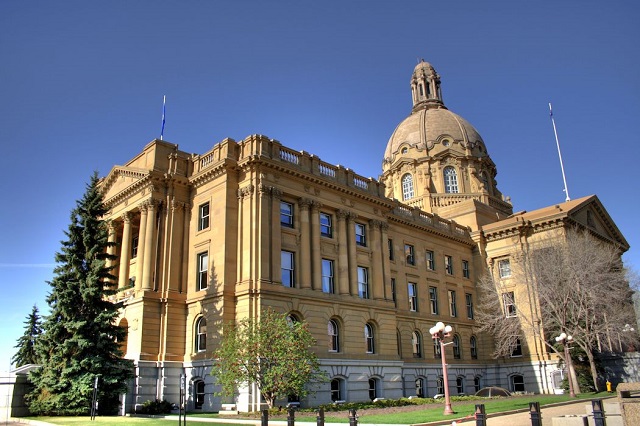
 Alberta2 days ago
Alberta2 days agoAlberta Institute urging Premier Smith to follow Saskatchewan and drop Industrial Carbon Tax
-
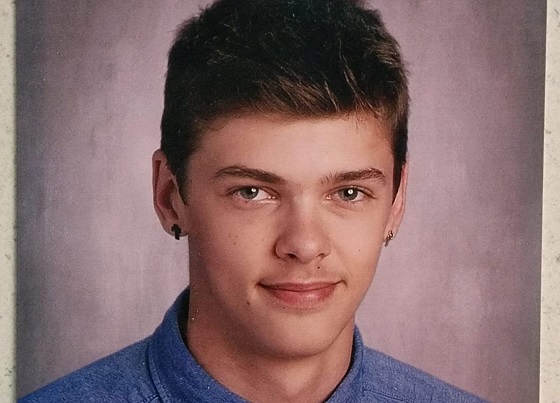
 Addictions2 days ago
Addictions2 days agoShould fentanyl dealers face manslaughter charges for fatal overdoses?
-
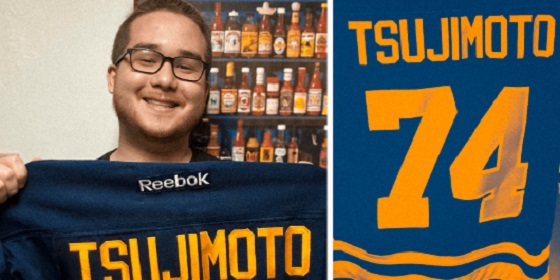
 Also Interesting1 day ago
Also Interesting1 day agoThe bizarre story of Taro Tsujimoto
-
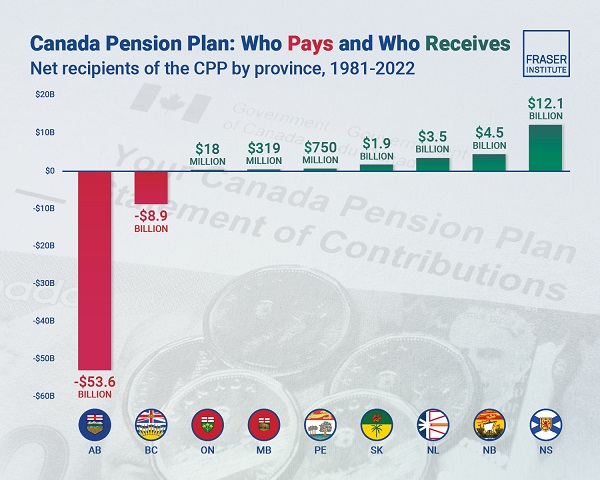
 Alberta2 days ago
Alberta2 days agoAlbertans have contributed $53.6 billion to the retirement of Canadians in other provinces
-
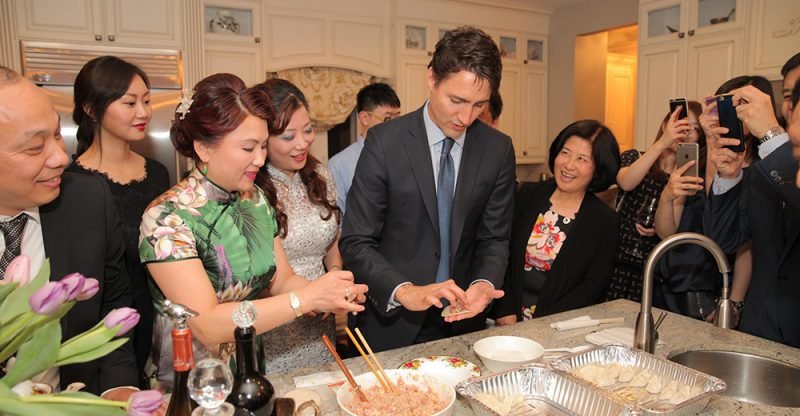
 2025 Federal Election2 days ago
2025 Federal Election2 days agoChinese Gangs Dominate Canada: Why Will Voters Give Liberals Another Term?
-

 Health1 day ago
Health1 day agoRFK Jr. Drops Stunning Vaccine Announcement
-

 Energy2 days ago
Energy2 days agoEnergy, climate, and economics — A smarter path for Canada
-

 2025 Federal Election22 hours ago
2025 Federal Election22 hours agoSoaked, Angry, and Awake: What We Saw at Pierre Poilievre’s Surrey Rally

















